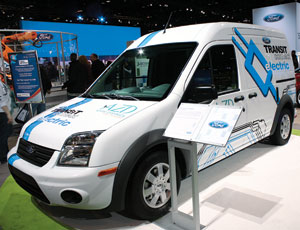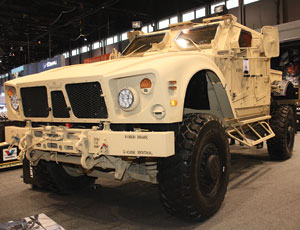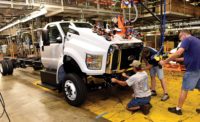Why go to the Chicago Auto Show? Because it could be renamed the Chicago Truck Show. You can find the latest concept cars and practical rides, but usually there is no shortage of construction trucks and other workhorses.



At this year’s show, held on Feb. 12-21, Ford Motor Co. waved the green flag by introducing its first all-new, all-electric vehicle—and it happens to be a work van. Based on Ford’s urban-delivery platform, the 2011 Transit Connect Electric is targeted at such small-business owners as architects, consulting engineers and subcontractors looking to burn zero fuel and score some serious brownie points among their more eco-conscious clientele.
Available in late 2010, the cheerful van promises a top speed of 75 mph and up to 80 miles on a single charge. It truly is a “world” vehicle: The basic glider will be built in Turkey, then it will head off to Michigan, where Detroit-based Azure Dynamics will install a liquid-cooled, Siemens AC motor, Azure power inverter and BorgWarner transaxle, replacing a 2.0L gasoline powertrain. Ford last year broke its partnership with Smith Electric Vehicles, choosing Azure as its supplier.
A 28-kWh bank of 192 lithium-ion cells, produced by a joint venture of Johnson Controls and France-based Saft Group, also will be fitted amidships, underneath the floorboards and between the frame rails. Ford points out that it gives up virtually no cargo space, at 135 cu ft. Carrying capacity has dropped more than 37%, to 1,000 lb, however, because of the new components’ added weight. Ford recommends using a 240-volt receptacle for charging, which takes 6-8 hours.
Ford still has some minor details to work out, such as pricing. While the batteries today are imported from France, Johnson Controls-Saft last year received a $299.2-million federal stimulus grant to build a domestic factory. Michigan is kicking in another $168.5 million in incentives. The plant, in Holland, Mich., is set to open in late 2010.
On the brawny side, local U.S. Army recruiters displayed the new M-ATV, an extreme off-road vehicle designed to tackle the tricky Afghanistan terrain. Built by Wisconsin-based defense contractor Oshkosh Corp. and powered by a 370-hp, 7.0L Caterpillar turbodiesel, M-ATV rides on a four-wheel, independent suspension with supersize springs that look like they might belong on a locomotive.
The angry-looking vehicle features armor plating; a V-shaped, MRAP mine-resistant hull; run-flat tires; onboard fire suppression and bulletproof glass. Costing taxpayers more than $400,000 apiece, the M-ATVs will be replacing the aging Humvee as the soldier’s workhorse of choice, say Army officials.



Post a comment to this article
Report Abusive Comment